Tribal and Folk Dances of India
Veronica Di Pilla
The tribal and folk dances of India are not only a form of dance, but rather a way of life for the Indians: each of them has wrapped a history and a culture rooted within. These dances draw the most fascinating canvas shaded by the liveliness and deep-rooted culture of India.
Dance is an art that helps you express your ideas that you cannot express in words. It is a way of life and certainly a way of pure happiness. India has a long list of folk dances. Here, you have some of the popular dances of India by each state.
BHANGRA in PUNJAB
.jpg)
Bhangra is one of the most popular and traditional folk dances in India that has made its presence throughout India and even in certain parts of the world. Bhangra doubles the joy of any special occasion in Punjab. However, you will witness it in all its glory at the Vaisakhi festival during the harvest season.
A Dhol (double headed drum) and a Chimta are the necessary musical instruments for the Bhangra. Men generally wear Kurta and Tehmat and wear a turban to complete their appearances. The girls wear long, flowing clothes accompanied by elegant jewelry. The dance costume is vividly colorful and each color symbolizes something.
CHHAU in EAST INDIA
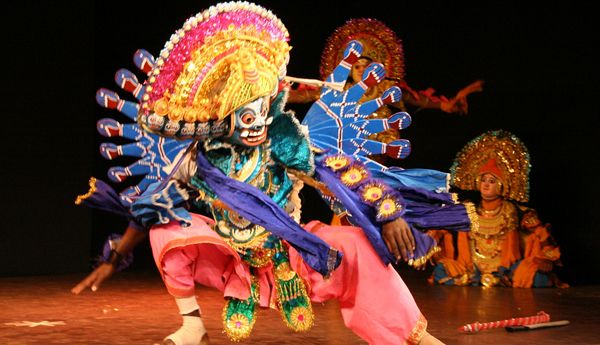
Chhau dance is part of UNESCO's Intangible Cultural Heritage of India. This form of tribal dance glorifies East India, predominantly Odisha, West Bengal, and Jharkhand, with its spectacular dance moves. Chhau dance is based on martial arts, simulated combat, stunts, and storytelling. Generally, the story revolves around the Indian epics Ramayana and Mahabharata.
Chhau dance's biggest draw is masked and armed performers. They have a sword in one hand and a shield in the other. A brightly colored Dhoti with a flared bottom is the traditional outfit for both men and women.
Chhau dance is the essence of the Gajan festival and the Sun festival. However, the performances take place throughout the year.
GARBA at GUJARAT
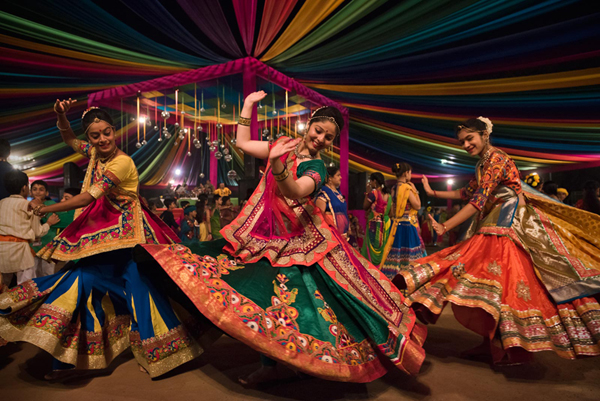
The Garba, originating from Gujarat, is one of the most popular and traditional folk dances in India and is mainly a dance of women dressed in beautifully embroidered Ghagra and Choli that form a circle and perform the Garba. If you want to see Garba in all its glory, visit Gujarat during Navratri.
Clapping in unison and singing the songs in praise of the Goddess Durga is the essence of Garba. Almost all of Garba's steps end with applause. The drum, the harmonium and the Naal are the necessary musical instruments for the Garba.
DUMHAL in JAMMU AND CASHMERE
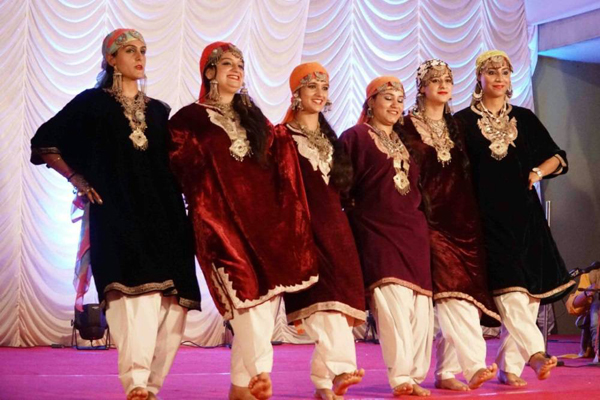
The Dumhal dance represents the culture of Jammu and Kashmir with grace. It is a men's dance. All the boys dress up in multi-colored clothes and then dance, singing the songs themselves out loud. The loud drum beats in between send the participants' energy level through the ceiling.
RAAS LEELA at UTTAR PRADESH
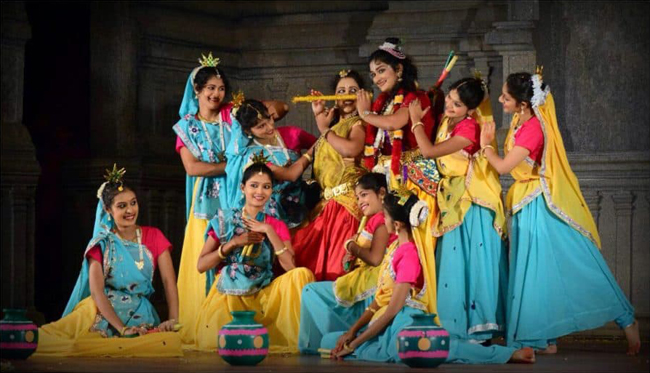
The Raas Leela dance form belongs to the city of Lord Krishna where love flourishes in all its glory and is the most popular folk dance in North India. If you want to dive into the deepest ocean of love, visit Mathura during Janmashtami.
In each performance, you will see a girl / boy dressed as a Krishna with a flute in his hand and peacock feathers on the crown. A group of girls, dressed in Ghagra, Choli along with a Dupatta, act as Gopis.
GHOOMAR at RAJASTHAN
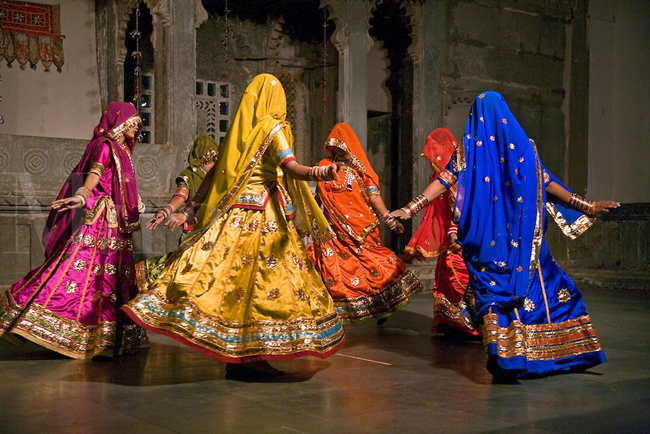
The Ghoomar is a tribal dance from the Bhil community of Rajasthan, but gradually opened to the royal palaces. The Ghoomar is a women's dance, mainly performed at Teej and other festivals. However, it also marks social occasions with its vitality.
The women fully dress in traditional Rajasthani costumes and perform as a group. Her long skirt, finely embroidered and studded with mirrors, plays an important role in Ghoomar's dance. Heavy jewelery and eye-catching bracelets add more beauty to your ghoomar look.
BIHU at ASSAM
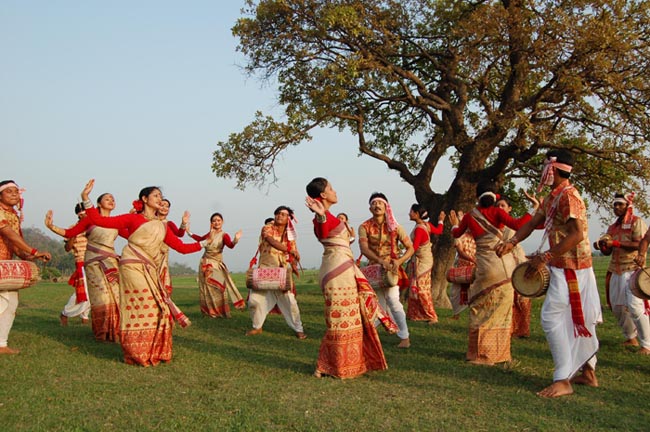
Unlike other tribal and folk dances from India, the Bihu dance involves quick hand movements and some complex steps. The performers of the Bihu dance are men and women of the same age. The Bihu dance marks the change of seasons and is performed only three times in a year.
The fun of the Bihu dance would be tasteless without a loud Dhol, horn, and a Gagana (a necessary instrument made of bamboo). All interpreters wear the same dress from color to design. It is the beauty of Bihu folk dance. Generally, all women wear mustard and red colored Sari while their male counterparts dress in Dhoti and Kurta of the same color. In addition, men complete their appearance with a pink ribbon.
LAVANI at MAHARASHTRA
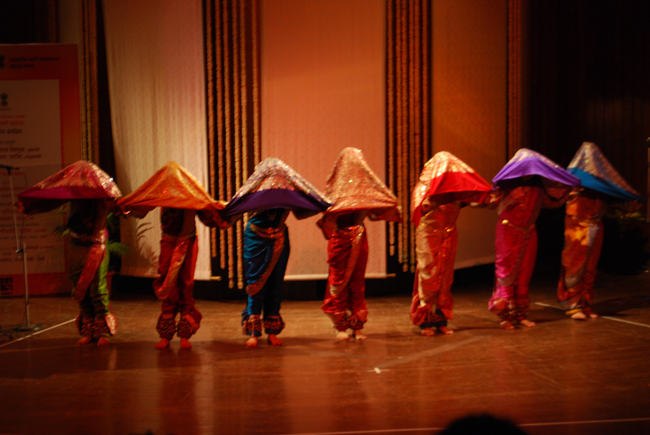
Lavani is a musical genre that glorifies the Marathi folk theater, characterized by its poetic songs and fast dance moves. Generally, Lavani's performance lasts all night.
The Lavani performers are always women who dance to the pulsing beat of Dholak. All performers wear the nine-yard Saree in typical Marathi style and are adorned with sparkling gold jewelry.
GHUMURA at ODISHA
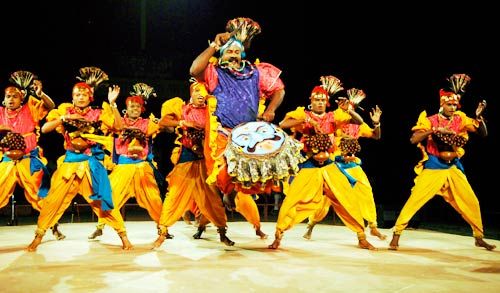
Among all, the Ghumura is the most prominent and popular of Odisha's traditional tribal dances. Vividly dressed boys perform Ghumura in Dussehra to celebrate victory over evil. Classified by some complex dance movements, the Ghumura dance is said to be a war dance. It has deep roots since the times of Ramayana.
RAUT NACHA at CHHATTISGARH
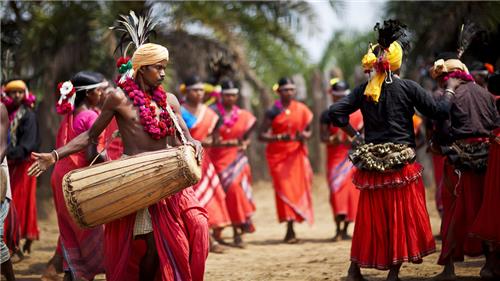
Chhattisgarh represents her cultural heritage in a striking "Raut Nacha" dance form that fosters an unrivaled devotion to Krishna and is illustrated in folk dance on the occasion of "Dev Uthani Ekadashi". The historical combat of Kansa and Krishna is the main theme of this dance form.
The performers dress as a warrior who wears metal shields and act in remarkable ways. Furthermore, the exciting songs in the form of couplets (Doha) bring the performances to life.
KARAKATTAM DANCE in TAMIL NADU
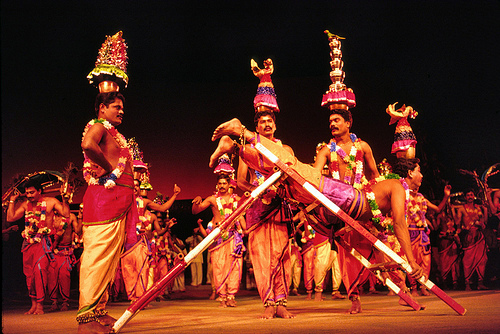
Unlike other tribal and folk dances from India, Karakattam needs more effort to do it perfectly. Mainly, women perform this dance in honor of the rain goddess Mariamman.
The girls wear elegant brightly colored saris and decorate them with garlands. From hair to wrists, they can be seen superbly adorned with flowers. Most importantly, they put a vividly adorned flower pot on their heads.
YAKSHAGANA in KARNATAKA
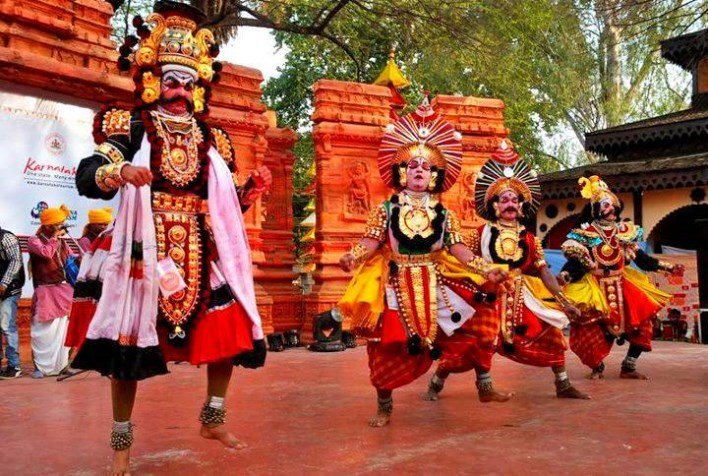
Yakshagana is actually a popular Karnataka theater. It is also quite different from other Indian tribal and folk dances. From melodic music to lush dance moves and from spontaneous expressions to thoughtful dialogues, a performance of Yakshagana will captivate you in its hypnotic aura.
In addition to dance moves, the performers' multi-colored costume is the greatest eye-catcher. They are normally dressed in a royal outfit.
Yakshagana's performances always spin the mythical tales of the Ramayana, Mahabharata and Puranas with a texture of entertainment.
VEERANATYAM at ANDHRA PRADESH
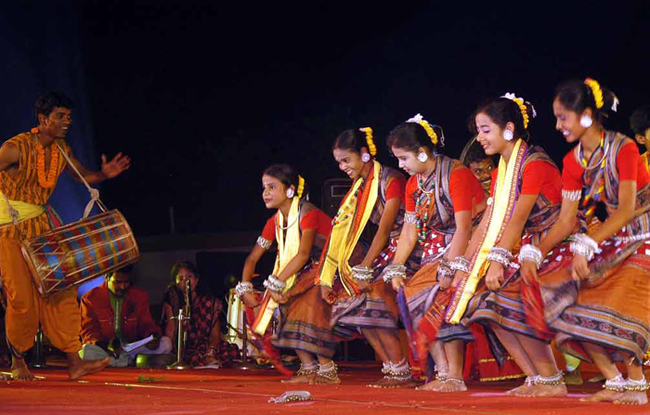
Previously, Veeranatyam was a ritual of the Vajramushti community. But today, it has taken an extensive art form. It is actually a tribute to the almighty Lord Shiva.
Since the dance is about Lord Shiva, it is extremely vigorous. The dancers invigorate her even more with her poignant performance. It is often accompanied by the continuous chants of the Shiva mantras and some echo musical instruments.
GAMBHIRA in WESTERN BENGAL
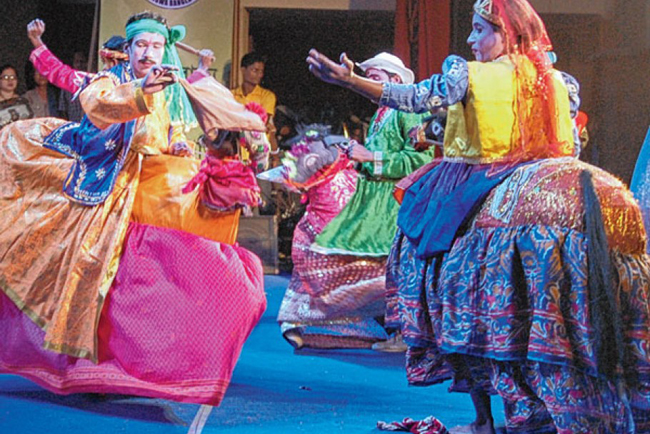
When it comes to folk dances, West Bengal has a long list to mark their presence. Among all, Gambhira is the most spectacular. Although it is more of a theatrical art, it also involves some transferable dance moves. There are 2 or 3 artists who set the stage on fire with their fascinating acts.
The theme of the performances always revolves around the social, political and everyday problems of society. Its representation is so fascinating that it will take you into a trance for a moment.
FUGDI in GOA
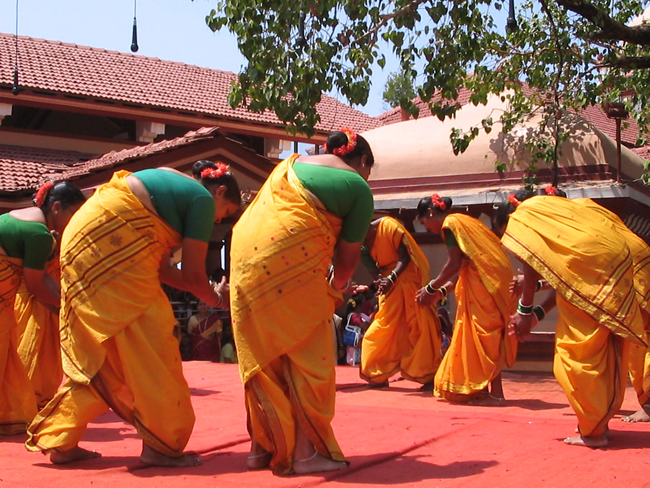
The Fugdi dance is one of the best tribal dances in Goa. Middle-aged women perform Fugdi at a religious festival like Ganesh Chaturthi. They form a circle and act on their own. Musical instruments and songs are not required. The women sing the songs themselves.
LAHO in MEGHALAYA
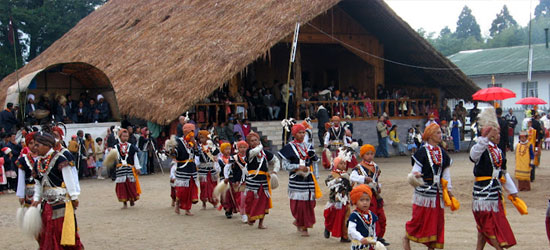
Laho is a Meghalaya tribal and folk dance performed by the Jaintia community at auspicious festivals. It is a folk dance with a partner. Men and women dress in colorful dresses and dance together.
Unlike other tribal and folk dances in India, the Laho dance does not need a drum or any musical instrument. Performers generally recite rhythmic pairs themselves. The dance begins at a slow pace. As it progresses, it picks up momentum and ends at a high rate.
HOJAGIRI in TRIPURA
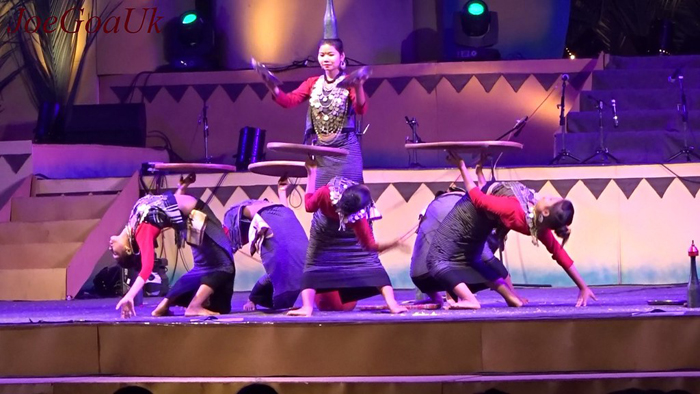
Tripura presents her unique art through her Hojagiri tribal dance. The dance is performed by 5-6 young girls on the occasion of the Hojagiri festival. In fact, it is a religious ceremony to appease the goddess Laxmi.
The Hojagiri dance steps are complex, like bending up and back. This is the beauty of this dance.
DHOL CHOLOM in MANIPUR
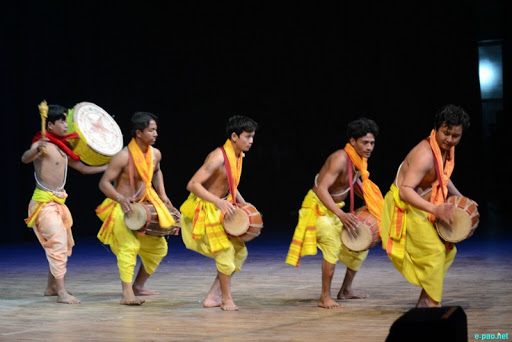
The Dhol Cholam is often depicted in Buddhist monasteries, and the themes of the dance are always Buddhist stories. A group of young men with swords and shields in their hands perform Dhol Cholam during Holi. It is primarily a form of tribal war dance. The dance performance is stimulating in nature and always requires a drum.
NAMAGEN at HIMACHAL PRADESH
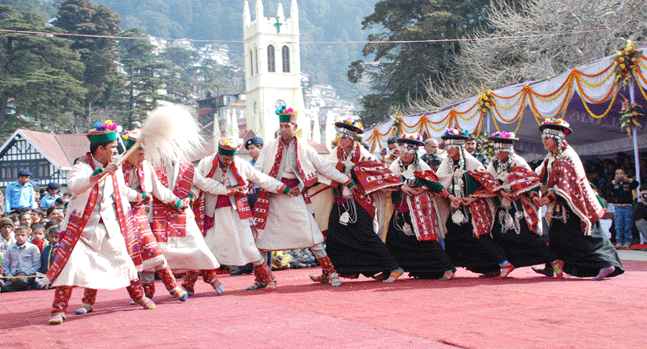
Namagen is the essence of the state. The Kinnauri tribal community of Himachal Pradesh performs the Namagen dance during the month of September to celebrate the arrival of autumn.
In addition to the lovely music, the interesting thing about this dance is the dancers' wool costumes. Unlike other tribal and folk dances from India, Namagen needs various musical instruments.
HURKA BAUL in UTTARAKHAND
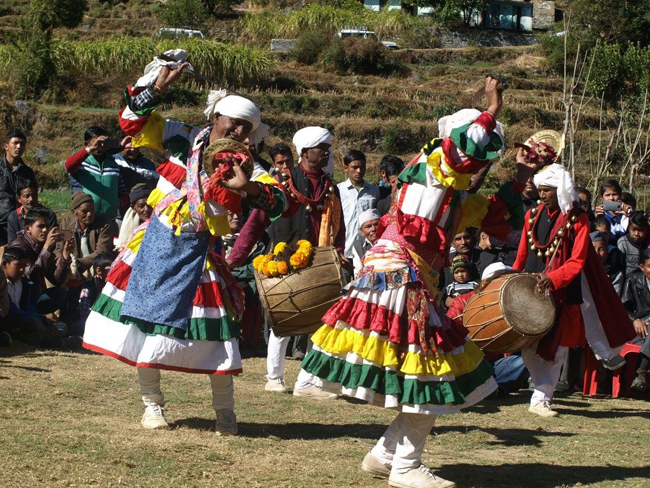
Amidst the unspoiled magnetism of the snow-capped mountains and the calming calm of Uttarakhand, check out the Hurka Baul dance to witness a different facet of Uttarakhand. It is a seasonal dance, performed as a ritual during the cultivation of rice and corn. A group of exquisitely dressed boys or girls perform the dance in the different fields on a fixed day. A singer recites the heroic stories of the battles, and the performers enact the narrative in their evocative movements.
PADAYANI in KERALA
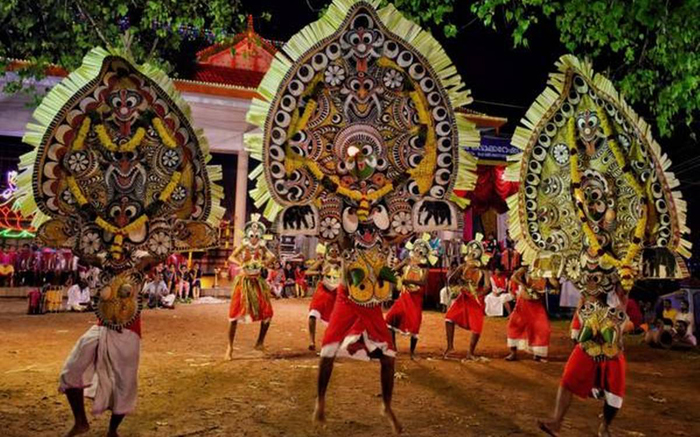
Padayani is a ritual dance with a mixture of music, theater, painting, devotion and, of course, dances. The padayani is performed on the banks of the Pampa River at Bhadrakali temples to commemorate its religious history.
The performers, who wear large face masks, dress in traditional clothes and sing the melodic songs, are truly a sight to behold. To make it more dynamic, the melodious sounds of Thappu (Padayani's main instrument) leave no stone to move.
GAUR at MADHYA PRADESH
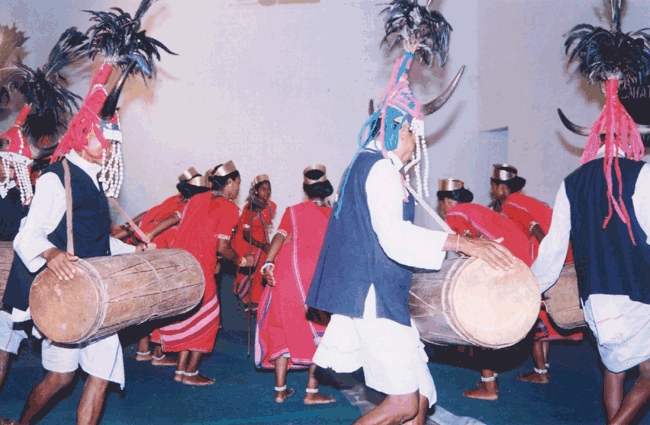
The Gaur dance is popular with the hunting tribes. In fact, it symbolizes the hunting spirit that never dies. Generally, people from the hunting tribe make the announcement of the Gaur dance by sounding a horn and a bamboo trumpet. Then they put on strange tribal dresses and play the melodies of their own music.
The interesting part of Gaur's dance is the deafening sound of the drum. With its fascinating movements and the spontaneous tempo of the music, Gaur's dance captivates the audience.
BARDO CHHAM at ARUNACHAL PRADESH
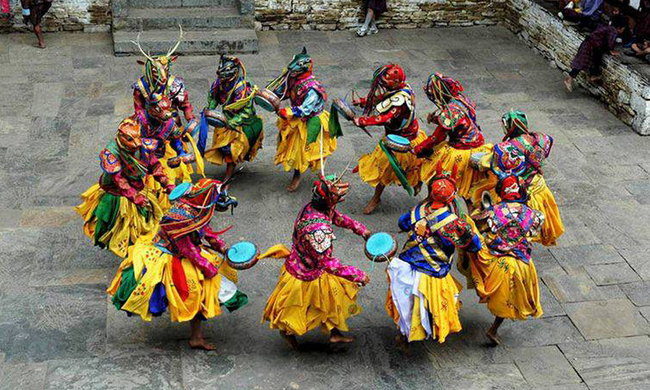
Among all the tribal and folk dances of India, the Bardo Chham is different because it has its own dance style. This ritual is performed by men and women during traditional festivals and ceremonies to eradicate the forces of evil.
People dress in traditional costumes and wear distinctive animal masks. Then they dance and enact a dramatic fight between good and evil. Their masks represent the innate quality of that animal.
SINGHI CHHAM at SIKKIM
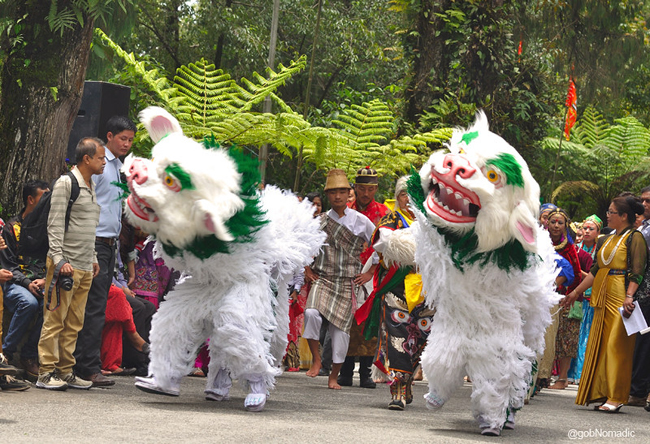
The Bhutia community of Sikkim beautifully represents their majestic culture through Singhi Chham dance. The snow lion plays an important role in this dance. It is a kind of ritual that takes place every year in September during the Kanchenjunga cult.
Performers put on esoteric lion costumes and then dance vigorously. A drummer adds more magic to the dance.
PAIKA at JHARKHAND
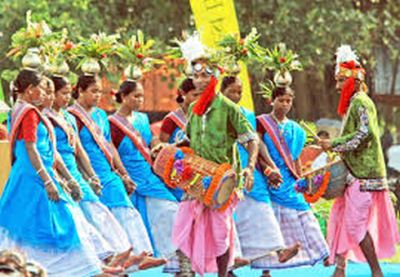
The Paika dance is a martial art of the Munda indigenous people, an incomparable fusion of unity and war. The people of this community gather and show their skills with different weapons. They hold swords and shields in their hands and then perform the dance.
JHIJHIYA DANCE at BIHAR
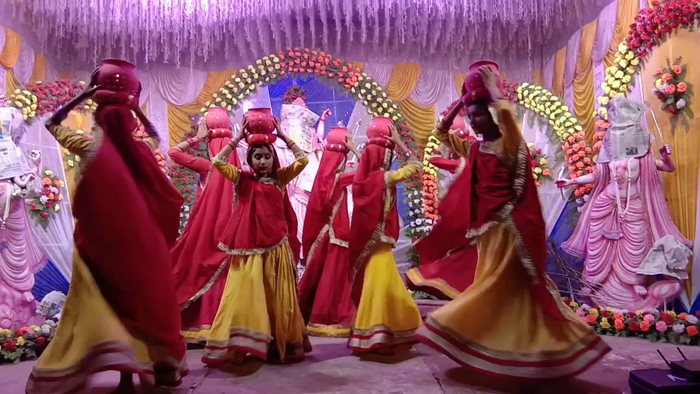
The Jhijhiya dance is performed by the Bihari women to appease Lord Indra when there is no rain and the lands are cracked. To perform this ancient dance, women dress in traditional costumes and put clay lanterns on their heads. They keep a lamp on inside the lanterns. Then they act as a group. Plus, percussion instruments and harmonious music add to the taste of the performance.
What does the folk dance mean?
Folk dance is a form of dance performed by a group of people. The dancers carry a specific dress code and act on a particular theme associated with the culture.
Well this is true for the world of folk dancing. However, if you talk about folk dance in India, the definition becomes a little deeper and more complicated. The vitality of India is evident even in its long list of popular dances.
What is Indian Folk Dance?
In India, there is a wide range of folk dances. Generally, Indian folk dances can only be seen in rural areas. Ordinary people interpret folk dance unlike professional dancers. Given the fact that the style of folk dance is free from variations and from any defined steps. The rules and steps of folk dances hardly change.
What is Indian tribal dance?
Tribal dance is a subform of folk dance, but is vastly different from the latter. Although both require a group of people and a specific dress code, they are two different types of dance that have their own specialties and form of expression. The meaning of tribal dances is also different.
Unlike folk dances, tribal dance is always performed by a tribal community (Adivasi) from different regions of India. The drum is a primary instrument for tribal dance in India.
When was folk dance invented?
However, the origin of the folk dances is not exactly known. Evidently, it evolved in the late 19th century in certain parts of the world. Soon after, it marked its prominence around the world and continued to become one of the most popular dance forms.
What is the history of popular dance?
There is no approved history of folk and tribal dances. Apparently, the folk dance got attention after the 19th century. It remained under the umbrella for years before breaking through until it became a popular dance form around the world.
Talking about the history of Indian folk dances, tribal dances and Today, India has different types of folk dances. The Bhangra is believed to be the oldest.
What is the importance of folk dance?
Folk dances are important because they keep the culture alive. There can be no better way to express the ebbs and flows of life than folk dance. In a real sense, Indian tribal and folk dances not only provide a comprehensive view of culture and tradition, but also act as a common thread connecting past and future generations, reviving ancient culture.
THE CHARACTERISTICS OF TRIBAL AND FOLKLORIC DANCES
Although there are no instructions for tribal and folk dances and they do not need professional training, they have their own characteristics that distinguish them from others. The tribal and folk dances of India have their own set of attributes.
-
The themes of Indian folk and tribal dances always revolve around the daily life and rituals of rural communities.
-
They don't have any defined rules, professional training, or a dedicated studio to follow them.
-
The tribal and folk dances of India have an intimate relationship with peasants, indigenous tribal peoples, and hill villagers.
-
They are transmitted from generation to generation, maintaining the connotations of antiquity, elegance and tradition.
-
A folk dance performance is usually accompanied by vigorous music and certain musical instruments that can evoke the buoyancy in you. However, the music and rhythms are mostly in the local language.
-
Above all, the tribal and folk dances of India illustrate the aesthetic values, artistic heritage, and cultural heritage of the country.
-
People perform folkloric dances generally at harvest seasons, historical events, family functions, social gatherings, religious gatherings, or any other special occasion.
-
People perform popular dances generally at harvest seasons, historical events, family functions, social gatherings, religious gatherings, or any other special occasion.
What is traditional and ethnic folk dance?
There is a fine line between ethnic dance and folk dance. Ethnic dance is actually an umbrella term for folk dance. Religious and traditional themes are the common theme of an ethnic dance. An ethnic dance can be restricted to a particular ethnicity and community. The different tribal dances can be classified as a form of ethnic dance.
Instead, folk dances are mainly based on daily life and social activities. People from different communities can perform a folk dance together. However, they must have the same cultural background.
Photos by: Google
.jpg)

























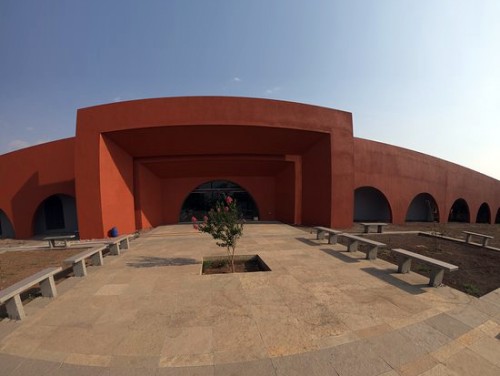
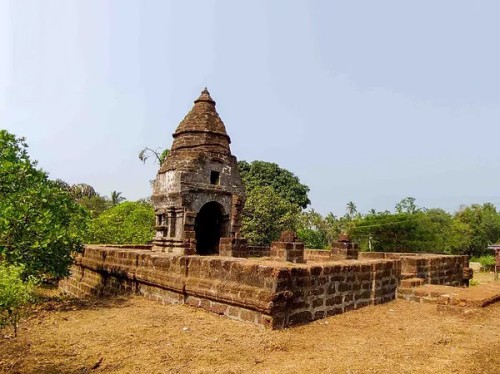
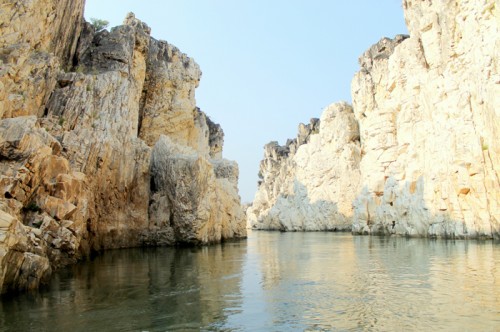
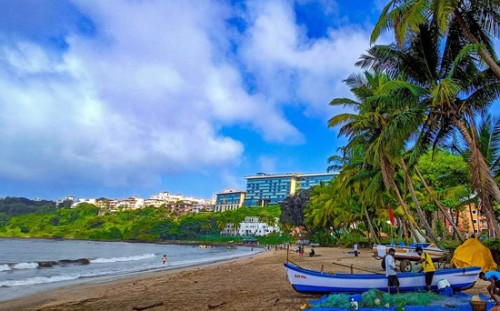
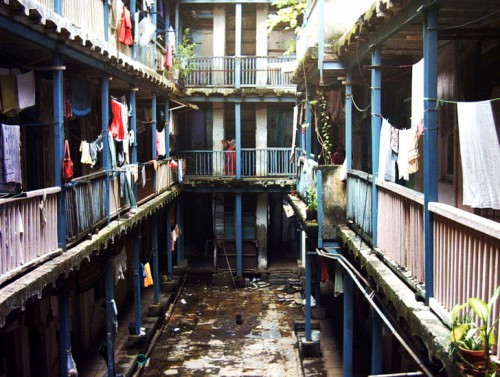
 EN
EN